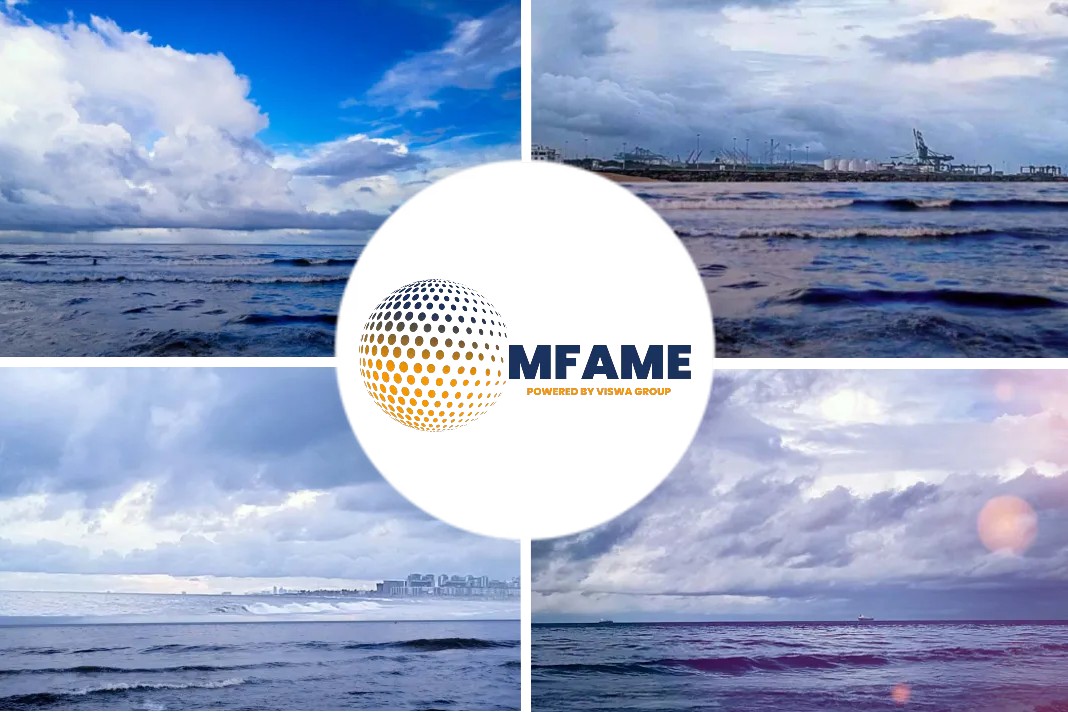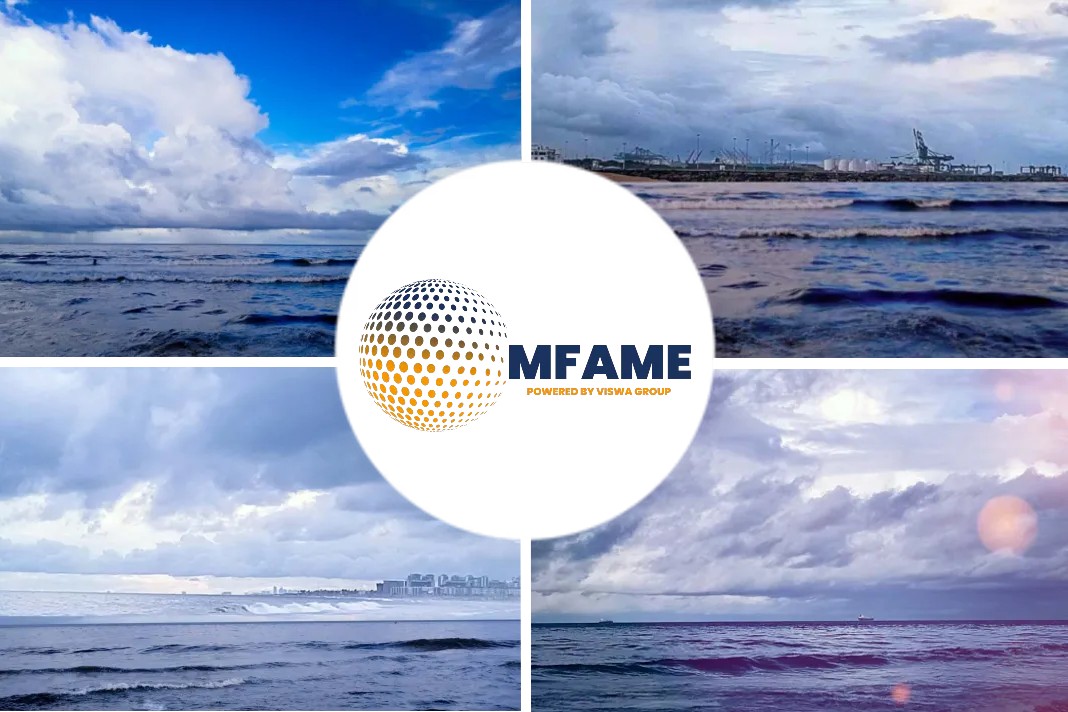While self-driving cars have hogged the headlines for the past few years, other forms of autonomous transport are gaining steam. This month, IBM and Promare — a U.K.-based marine research and exploration charity — will trial a prototype of an artificial intelligence (AI)-powered maritime navigation system ahead of a September 6th venture to send a crewless ship across the Atlantic Ocean on the very same route the original Mayflower traversed 400 years ago, reports Venture Beat
The original Mayflower ship, which in 1620 carried the first English settlers to the U.S., traveled from Plymouth in the U.K. to what is today known as Plymouth, Massachusetts. Mayflower version 1.0 was a square-rigged sail ship, like many merchant vessels of the era, and relied purely on wind and human navigation techniques to find its way to the New World. The Mayflower Autonomous Ship (MAS), on the other hand, will be propelled by a combination of solar- and wind-generated power, with a diesel generator on board as backup.

Above: Mayflower Autonomous Ship route map
Moreover, while the first Mayflower traveled at a maximum speed of around 2.5 knots and took some two months to reach its destination, the upgraded version moves at a giddy 20 knots and should arrive in less than two weeks.
AI Captain

Above: Mayflower Autonomous Ship (MAS) will use solar- and wind-generated power, with a diesel generator as backup.
The mission, first announced back in October, aims to tackle all the usual obstacles that come with navigating a ship through treacherous waters, except without human intervention.
The onboard “AI Captain,” as it’s called, can’t always rely on GPS and satellite connectivity, and speed is integral to processing real-time data. This is why all the AI and navigational smarts must be available locally, making edge computing pivotal to the venture’s success.
Smart Decisions Governed by Environment Conditions
“Edge computing is critical to making an autonomous ship like the Mayflower possible,” noted Rob High, IBM’s CTO for edge computing. “The ship needs to sense its environment, make smart decisions about the situation, and then act on these insights in the minimum amount of time — even in the presence of intermittent connectivity, and all while keeping data secure from cyberthreats.”

Above: The Mayflower Autonomous Ship (MAS) is trained to avoid hazards
The Ship’s AI Features
The team behind the new Mayflower has been training the ship’s AI models for the past few years, using millions of maritime images collected from cameras in the Plymouth Sound, in addition to other open source data sets.
For machine learning prowess, the ship is using an IBM Power AC922 system, which is used in some of the world’s biggest AI supercomputers. Alongside IBM’s PowerAI Vision, the Mayflower’s AI Captain is built to detect and identify ships and buoys — as well as other hazards, including debris — and to make decisions about what to do next.
For example, if the MAS encounters a cargo ship that has shed some of its load after colliding with another vessel, the AI Captain will be called into action and can use any combination of onboard sensors and software to circumvent the obstacles. The radar can detect hazards in the water ahead, with cameras providing additional visual data on objects in the water.
Automatic Identification System To Know Vessels Ahead
Moreover, an automatic identification system (AIS) can tap into specific information about any vessels ahead, including their class, weight, speed, cargo type, and so on. Radio broadcast warnings from the cargo ship can also be accepted and interpreted, with the AI Captain ready to decide on a change of course.

Above: The Mayflower Autonomous Ship’s AI Captain in operation
Other Crucial Features
Other data the AI Captain can tap into includes the navigation system and nautical chart server, which provide the current location, speed, course, and route of the ship, as well as attitude sensors for monitoring the state of the sea and a fathometer for water depth.
The onboard vehicle management system also provides crucial data, such as the battery charge level and power consumption, that can be used to determine the best route around a hazardous patch of ocean, with weather forecasts informing the final decision.

Above: MAS power management system
Crucially, the AI Captain can communicate vocally with other ships in the vicinity to convey any change in plans.

Above: The MAS’ AI Captain broadcasting a message to neighboring ship
Vocal Communication With Other Ships
The MAS ship itself is still being constructed in Gdansk, Poland, and the AI Captain will be tested this month in a manned research ship called the Plymouth Quest, which is owned by the U.K.’s Plymouth Marine Laboratory. The test will essentially determine how the AI Captain performs in real-world scenarios, and feedback will be used to refine the main vessel’s machine learning smarts before the September launch.

Above: Test vessel: The Plymouth Quest
The state of play
Maritime transport constitutes around 90% of global trade, as it’s the most cost-effective way of transporting goods in bulk. But shipping is widely regarded as a major source of pollution for the planet.
Like self-driving cars, a major benefit of electrified autonomous ships is that they reduce emissions while also promising fewer accidents — at least three quarters of maritime accidents are thought to be caused by human error.
Moreover, crewless ships open the doors to longer research missions, as food, well-being, and salaries are no longer logistical or budgetary considerations.
Autonomous Shipping in Recent Years
There has been a push toward fully automating sea-faring transport in recent years. Back in 2016, news emerged that an unmanned warship called Sea Hunter was being developed by research agency DARPA, which passed the Sea Hunter prototype on to the Office of Naval Research two years later for further iteration. In Norway, a crewless cargo ship called the Yara Birkeland has also been in development for the past few years and is expected to go into commercial operation later in 2020. And the Norwegian University of Science and Technology (NNTU) has carried out trials of a tiny electric driverless passenger ferry.
Elsewhere, Rolls-Royce previously demonstrated a fully autonomous passenger ferry in Finland and announced a partnership with Intel as part of a grand plan to bring self-guided cargo ships to the world’s seas by 2025.
So plenty is happening in the self-navigating ship sphere — a recent report from Allied Research pegged the industry at $88 billion today, and it could hit $130 billion within a decade. But while others seek to automate various aspects of a ship’s journey, the new Mayflower is designed to be completely self-sufficient and operate without any direct human intervention.
“Many of today’s autonomous ships are really just automated — robots [that] do not dynamically adapt to new situations and rely heavily on operator override,” said Don Scott, CTO of the Mayflower Autonomous Ship. “Using an integrated suite of IBM’s AI, cloud, and edge technologies, we are aiming to give the Mayflower full autonomy and are pushing the boundaries of what’s currently possible.”
Four centuries after the Mayflower carried the Pilgrims across the Atlantic, we could be entering a whole new era of maritime adventures.
Did you subscribe to our daily newsletter?
It’s Free! Click here to Subscribe!
Source: Venture Beat





















